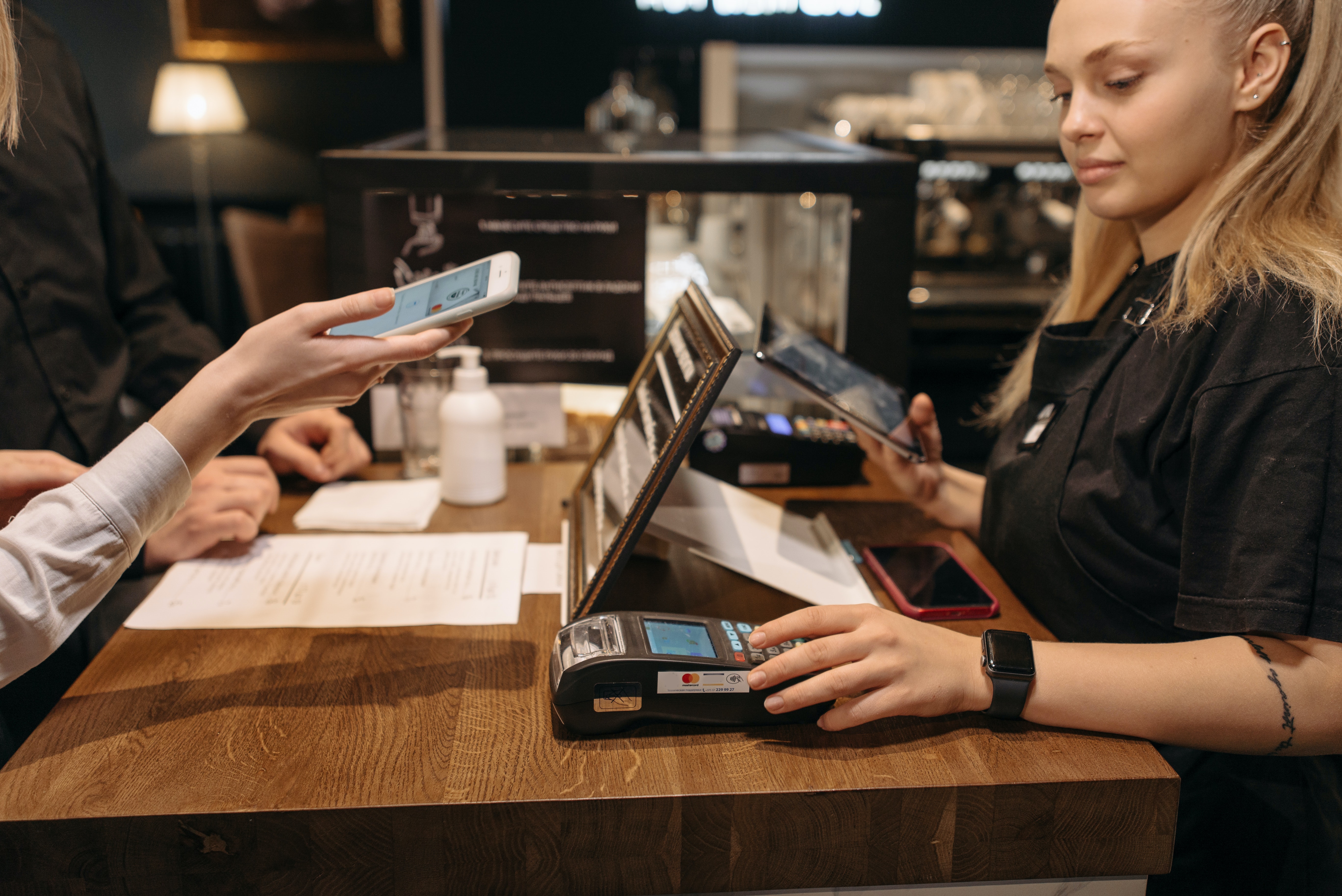9 Tips To Improve Waitstaff Productivity in Hospitality
TABLE OF CONTENTS
From unpredictable demand shifts to labor shortages, the hospitality industry has gone through many changes in recent times. And as the primary point of contact between management and customers, waitstaff are the frontline workers that keep the wheels of customer service in motion.
When 9.9 million of the US workforce is employed within the restaurant industry, it’s valuable to understand why they’re unmotivated, and how that affects productivity.
An unmotivated employee eventually turns into an employee at risk of leaving, and given the $5,864 cost of replacing even one hourly employee, it’s key for managers to know what practical steps they can take to tackle low motivation and bring the best out of their workforce.
Here are the 9 tips to motivate your waitstaff to ensure you maximize the productivity of your hospitality workforce.
Quick Navigation:
1. Define what their objectives are
2. Improve internal communication
3. Implement flexible self-scheduling
4. Use technologies to automate processes
5. Integrate transparency and feedback into the workplace
6. Practice recognition and reward
7. Create a safe working environment
8. Build trust with your employees
9. Promote continuous learning through training
1. Define what their objectives are
81% of new hires want key details on their role before they start. Providing them with these benefits both employee and company - the sooner an employee feels integrated into and capable to perform their role, the quicker they can be productive.
“Preboarding”, as it’s known, is a fundamental, pre-first day step that seeks to set new hires up for maximum success. It aims to bridge the knowledge gap between what their role involves (in terms of duties and responsibilities) and how they can be successful in it.
Following preboarding, the onboarding period is a vital stage that can determine an employee’s level of engagement, motivation, on-the-job productivity, and ultimately, desire to stay - 20% of new hires leave within 45 days for other opportunities.
This period is crucial in solidifying a new hire’s commitment to the company. From learning company policies and protocols to their team structure, well defined preboarding and onboarding process can account for a 70% boost in productivity.
Hospitality managers can capitalize on this period to cement commitment to the company in a few ways - by defining a new hire’s duties and responsibilities, introducing the organizational values, and reinforcing the employee value proposition through a company handbook that details your values, vision, and mission. All of this aims to inform a new employee to gain applicable knowledge to be successful in their role - right from the beginning.
By leveraging these stages to instill a sense of purpose, new hires will understand not just what they need to do, but feel intrinsically motivated to do it.
2. Improve internal communication
During the onboarding period, managers need to be good communicators to enable an employee to perform at their best. As outlined, their starting days and weeks are critical stages of the employee lifecycle, and it's during this stage that managers need to set a positive communicational precedent.
How? Firstly, by defining your expectations of employees, then, by upskilling employees on how to use your communication tool of choice (be that email, WhatsApp, or a specific software), and finally - leading by example in both frequency and method of communications.
As it currently stands, communication and how it’s distributed is inadequate - 85% of frontline workers were dissatisfied with the degree of communication received and stated it wasn’t enough to perform well on the job.
By adding communication tools into your existing tech stack alongside existing tools you may use like OpenTable, Restaurant365, or Gusto, you can communicate with your workforce at scale. And the demand is there - 50% would leave their current role for improved communication technologies if it helped to perform their job effectively.
But managers need to be utilizing software effectively too - by adopting a refined approach that ensures the information is relevant, informative, and engaging. For instance, ensuring messaging received is local and branch-specific. To deliver blanket communications is to detriment communication - employees will come to earmark your broadcasts as irrelevant to them and stop tuning in.
42% of hospitality employees note internal news and updates as irrelevant and disconnected, whilst 30%considered it a productivity barrier altogether. Conversely, when information is highly relevant, employees see a 25%boost in productivity.
To maximize their efficacy, there are further considerations made too - for instance, which information should be prioritized? What should our cadence of communication (daily, weekly), be? And who (which individual, team, branch, or region) should get them?
3. Implement flexible self-scheduling
Scheduling management is a universal challenge when shifts are based on unpredictabilities like customer demand.
Being called in to cover shifts unexpectedly or being assigned shifts inflexibly impacts employees’ mental health, which then takes a toll on their ability to perform. Poor work-life balance breeds low morale and burnout (52%), with the latter being the main reason employees quit.
Managing a mentally and physically depleted workforce not only risks voluntary departures but understandably has a knock-on effect on the customer experience, resulting in longer customer wait times (54%) and interactions (52%).
Considering 65%wished for a more stable timetable, how can you deliver on this, eradicating burnout, and in turn, improving productivity levels? One answer lies in self-scheduling toolsthat provide greater autonomy and ownership of their working hours.
Implementing such a solution means colleagues can communicate to flexibly trade shifts and choose hours that coincide with their most productive times. Self-scheduling is becoming increasingly important to this frontline demographic - it is now one of the top 5 factors waitstaff workers look for when searching for a job.
This approach also means less time is spent on shift allocation by managers - freeing up their time to spend on other parts of the business. Ultimately, productivity is shown to double when an organization embraces flexibility.
4. Use technology to automate processes
Picture this: you’re 3 hours into your shift and it’s the usual lunch rush. Instead of serving customers and attending to their needs, the floor manager suddenly asks you to drop everything and conduct a quick inventory check of drinks.
For technology to deliver a return on investment to a business, it should serve a single purpose - to simplify. In hospitality, it’s about reducing manual processes to replace them with more time for business-critical ones, particularly when 40% of a worker’s time is spent on repetitive tasks.
Take inventory management as an example. Automating this can save businesses 95%of their time by automating manual-based data entries giving managers visibility on their current food stock and informing them of when a new order is due.
Automating labor-intensive processes like bookings, inventory, and capacity management with few errors and better forecasting frees up time for waitstaff teams to focus on improving on what matters - the customer experience.
By championing automation, you allow employees to focus on more critical aspects of their job, and employees who enjoy a reduced manual input (71%), are less likely to churn (25%).
5. Integrate transparency and feedback into the workplace
While how often and how you communicate are important, what those communications consist of is also key. A lack of transparent communication is a root cause of low morale. And, for an industry with one of the lowest rates of motivation, hospitality managers need to be great communicators when it comes to improving workforce performance.
Try to champion transparent feedback through regular, constructive, and authentic communication. Not least because feedback can lead to a more engaged workforce that is more productive (31%) and sells more (37%).
One iteration of 'constructive, authentic' communication comes in the form of the performance review. How frequently do you conduct yours?
For managers, a performance review is a unique, ‘on-the-ground’ insight into employee strengths, aspirations, weaknesses, and barriers to performance as well as tangible takeaways on what you can do to empower them.
For an employee, it’s an opportunity to discuss challenges and improvements within the team, feedback on management performance, and understand how they fit into the company’s objectives (e.g. “I’d like to take an active leadership role during shifts”, or “I think the team would benefit from a more hands-on approach from management”).
While invaluable to conduct, frequent performance reviews can be time-consuming, and with a larger staff base, feel untenable. Though you can conduct them more informally and frequently (which has shown to lead to a 46% improvement in performance), they also only speak to one part of the picture - the manager’s. But how does the employee feel?
In addition to performance reviews, managers should conduct quick check-ins to gain insight into day-to-day areas for improvement. E.g. Do waitstaff want information on new menu items to be more comprehensive? What are they lacking that they think should be included? The simple act of asking employees for their input can improve their performance by 4.6 times.
It’s a win-win - employees value being asked, and their regular insight enables you to improve your operations. Pulse Surveys offer a good medium through which to administer these more frequent, complementary check-ins to performance reviews - these are brief sets of questions sent to employees to continuously gauge their views on different topics .
From job-related roles to the overall working environment, pulse surveys encourage higher employee engagement and are invaluable in retrieving feedback to inform organizations on different subjects through higher employee participation. In fact, the average pulse survey enjoys an 85% response rate while employee engagement surveys only record a 30-40% response rate.
Establishing a continuous feedback structure in this manner results in a more motivated (65%), productive (66%) workforce that is more likely to achieve the organization’s objectives (64%).
6. Practice recognition and reward
Recognition is a powerful motivator - 74% of workers would work harder if their efforts were better appreciated and acknowledged. And recognizing high performers truly doesn’t take much - it’s a low-cost, high-impact method to show appreciation, and improve morale and productivity. When employees are acknowledged for their efforts, productivity is shown to rise by 12%.
Reward is an important partner to recognition. Beyond praise, managers can reward employees in a low-cost way by ‘gamifying’ their goals. What goals does your branch have?
An example of this in practice would be a leaderboard that tracks the highest average transaction value, or most positive customer feedback, by an employee over a period of time. Leaderboards can be a great way to increase engagement in their role by adding an element of friendly competition.
Complement this with tangible rewards by e.g. running a quarterly competition where the staff member with the most positive customer feedback received wins a $100 gift voucher. Gamification of productivity has been shown to increase work performance by 90%.
Incentivizing friendly competition in other areas such as gamified training, points can be earned for completing lessons that foster a sense of achievement for each completed lesson that improves motivation among employees.
7. Create a safe working environment
Let’s paint a picture: you’re 2 years working in a kitchen role where you prepare food for guests. Your manager is anticipating potential shortages among the floor staff over the next weeks and they ask you to do a training course refresher on food safety, hygiene and common allergens.
Training refreshers such as this extend workers' confidence by equipping them with the knowledge they need to carry out their duties accordingly. One way in which employees can enjoy a safer workplace is through compliance training.
This provides the baseline for which employees can access up-to-date information to ensure all work-related safety measures are in place that enables them to perform at their best by upskilling based on the latest updates on industry or company policy changes. To be able to operate at maximum productivity, your employees need to feel as though they are in an environment which supports them in ensuring the safety of themselves and others.
Safe physically, in the sense that they have the knowledge and confidence to perform their tasks without accident or injury, and emotionally where they feel safe in expressing themselves at work without the fear of being judged or mistreated. For every $1 invested in a safety program, businesses save $4-$6 in reduced accident claims.
In return, they’ll feel a sense of belonging and purpose where they can confidently carry out their responsibilities and they're more likely to stay loyal to your company. If a businesses fail to meet an employee’s expectations of a secure place of work, managers risk developing a disengaged workforce or worse, leading them to find other opportunities elsewhere. Unsafe working conditions were the main reason for 8.4% of employees churning.
8. Build trust with your employees
Employee trust is about validating their decisions to work independently and humanizing the employee experience without compromising their workplace freedom.
As one of the main drivers of trust in the workplace, ‘humanity’ refers to an organization’s genuine care for the well-being of others reported that hospitality employees are 4.6 times more likely to be motivated at work.
Envisage your Team Supervisor is on sick leave. Usually, they’d be running shifts from start to finish and ensure your restaurant would run smoothly from the kitchen, reception, and servers all the way to the food arriving on a customer’s plate in a timely manner.
But you’ve noticed over the past few months that another team member has been stepping up to the plate - they've been working hard, helping others with their questions during shifts and showing initiative when it comes to handling complaints and other customer-related queries.
An example of empowering your employees with trust would be, in this situation, instead of stepping in yourself, to entrust this employee with a leadership role and delegating the responsibility of the restaurant's smooth-running to them for the week.
This is a quick example of empowering your employees to take the next step by delegating tasks and responsibilities you believe they’re ready for. Beyond the added responsibility, you’re also extending the duty of looking after the team's welfare and their success which helps to reaffirm their loyalty and commitment to your business.
9. Promote continuous learning through training
Continuous learning refers to the practice of gaining new skills, knowledge, and information on a consistent basis in response to company and industry demands. On one hand, it allows managers to create training according to key knowledge gaps ensuring that their workforce are continually being invested in and empowered to perform at their best.
On the other, it fosters a sense of purpose for employees enabling them to remain motivated and engaged. By setting your workforce up for success, it furthers employees’ commitment to you by feeling that they’re invested in, and in turn, are more likely to be loyal to you.
Companies leveraging mobile training see an increase in output quality (40%) and profitability (21%). Before engaging in continuous learning, there are a few factors to consider, particularly in hospitality settings.
As waitstaff are purely customer-facing members of the team, it’s important to consider their lack of access to a desktop computer or laptop. This restricts their ability to juggle between personal learning and development (both professional and personal reasons) and servicing customers to the best of their ability.
Another consideration is the investment of time, attention, and focus needed to make the most out of the training sessions. Particularly if they’re long and oftentimes require some form of technicality, it’s crucial that the training material is retained.
The fast-paced, busy nature of waitstaff teams means that it’s a challenge to engage workers in continuous learning with 27% reporting it as irrelevant and unengaging. A mobile learning platform that provides 24/7 on-demand training access enables your workforce to engage in learning content that suits their schedules. To boot, mobile learning courses see a 45% completion rate compared to desktop-based training with a 55% knowledge retention rate.
When learning is condensed into digestible learning content, learners can complete lessons as part of their training course that doesn’t stifle their performance and helps turn training to become a part of their regular workflow.
The takeaway
To motivate and improve productivity among hospitality waitstaff will require a people-centered management approach.
By getting them started right, providing them with the flexibility to determine their schedules, making communications consistent, celebrating individual victories and providing them with software that simplifies their lives, you set them up for success, and show you care.
Any effort you invest will be returned - in greater motivation, loyalty, productivity, and a happier staff base whose positive radiates to customers and colleagues alike.
Are you looking to motivate your workforce and increase their productivity? eduMe is an embeddable training solution which lets you provide seamless, one-tap access to timely and relevant training by integrating into your existing tech stack. By partnering with providers such as Fountain, Quinyx and Braze, we help you onboard and upskill your deskless workers at scale, optimizing efficiency and improving worker retention.
Get in touch now to see how we can help you motivate your workforce and increase their productivity 👇
Join 10,000+ frontline leaders
Subscribe to ‘Training the Frontline’ and get weekly insights sent straight to your inbox.







